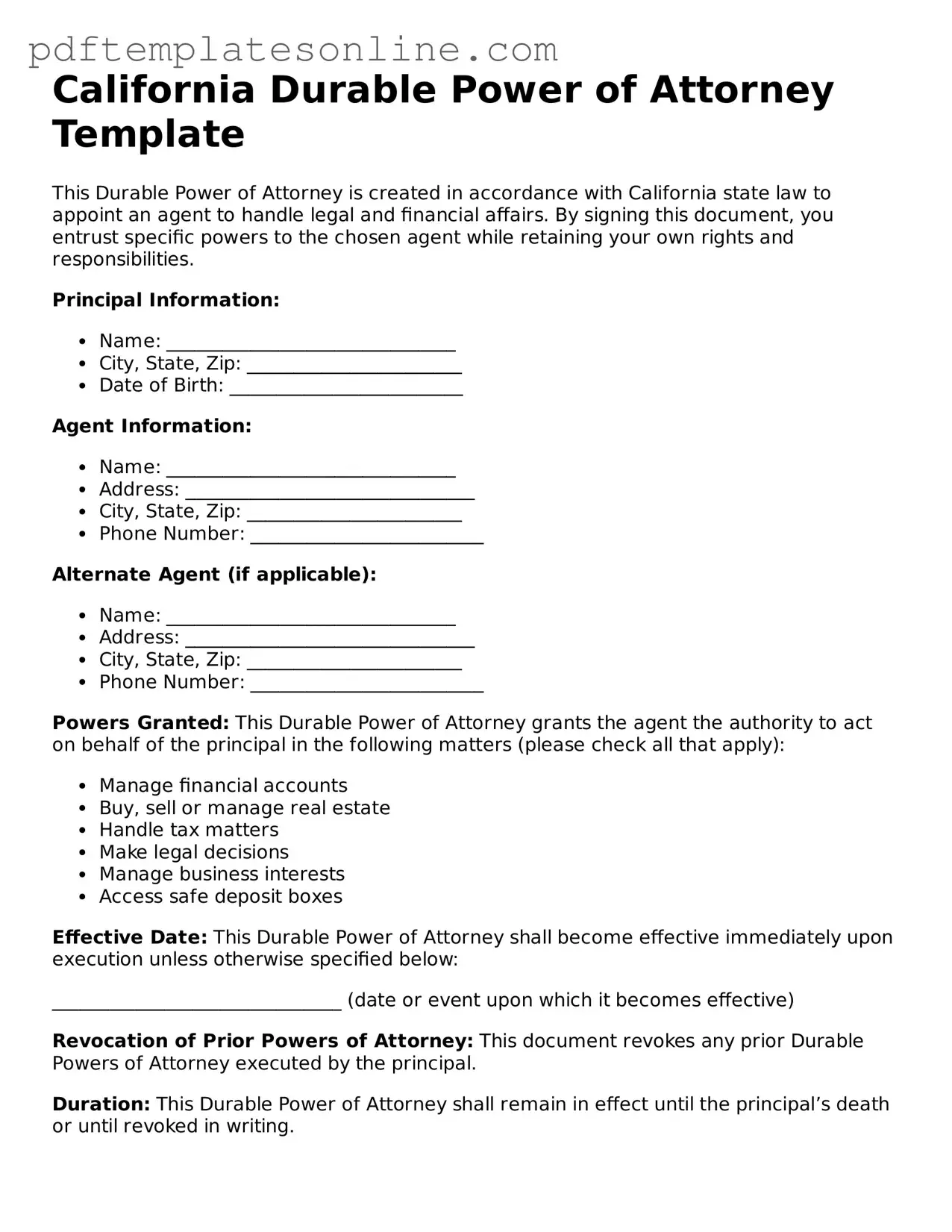Filling out a California Durable Power of Attorney form can be a straightforward process, but many individuals make common mistakes that can lead to complications. One frequent error is failing to specify the powers granted to the agent. Without clear definitions, the agent may not have the authority to act in the way the principal intended. It is essential to detail which powers are granted, whether they pertain to financial decisions, healthcare, or other specific areas.
Another mistake often made is neglecting to date the document. A Durable Power of Attorney is only effective if it is dated properly. Without a date, questions may arise regarding when the authority was granted, potentially leading to disputes or challenges. Always ensure that the form is dated on the day it is signed.
Many people also overlook the importance of having the document notarized or witnessed. In California, a Durable Power of Attorney must be signed in front of a notary public or two witnesses to be valid. Failing to meet these requirements can render the document ineffective, leaving the principal without the intended protections.
Additionally, individuals sometimes choose an agent without considering their ability to handle the responsibilities involved. Selecting someone who is not trustworthy or lacks the necessary skills can lead to mismanagement of financial or healthcare decisions. It is crucial to choose an agent who is reliable, responsible, and understands the principal's wishes.
Another common oversight is not discussing the decision with the chosen agent beforehand. This conversation is vital. It ensures that the agent is willing to accept the role and understands the principal's preferences and values. Without this dialogue, the agent may be unprepared for the responsibilities they are about to undertake.
Finally, people often forget to review and update the Durable Power of Attorney as circumstances change. Life events such as marriage, divorce, or the death of a chosen agent can impact the validity of the document. Regularly reviewing and updating the form helps to ensure that it reflects current wishes and relationships, providing peace of mind for the principal.
